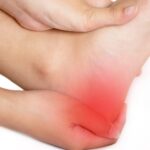Although not widely used among the medical community, the term “bed sore” conjures up images and concerns often associated with incapacitation. Bed sores or pressure ulcers may develop when excessive pressure near a bony prominence on an individual unable to move or shift in bed, results in an open wound.
Pressure ulcers, often referred to as decubitus ulcers, can lead to infection, amputation, and death. Among the more common pressure ulcers are wounds that occur on the heels. So serious is the issue of heel ulcers, that the government has declared them a “never event”.
Originally developed in 2002, the “never event” list, referring to serious adverse medical events or errors, is now comprised of 29 “serious reportable events” that are grouped into seven categories.1,2 Within the care management event category is the description of “any Stage 3 (full thickness of the skin that may extend deep into the subcutaneous layer) to Stage 4 (extends down to bone), or unstageable pressure ulcers (tissue injury is apparent, but actual depth is not obvious due to presence of dead or bruised appearing tissue) acquired after admission/presentation to a health care facility.”1,2
Heel ulcers are not solely caused by pressure. Even when pressure and subsequent reduced blood flow to the skin have resulted in a tissue injury and ulcer, conditions such as diabetes, peripheral arterial disease, lymphedema, peripheral neuropathy, immobility (from any cause), connective tissue disorders, malignancies, lower extremity contracture, and other conditions may exacerbate the situation.
Shifting in a chair after being seated for several minutes or tossing and turning in bed are ways our body ensures pressure is relieved to skin overlying a bony prominence. If we were unable to move, blood flow and subsequently oxygen to the skin would be diminished to the point of causing injury (hypoxia) and tissue death (ischemia and necrosis). That being stated, in an immobile individual, injury to the skin that can lead to formation of a wound can occur in as little as 30 minutes.
As such, the treatment plan must take into account the overall skin integrity and nutritional status of the patient. Addressing and attempting to reverse the underlying contributing factors of heel ulcers is the first step in the healing process. The body was designed to heal itself but when its ability has been compromised, knowing how to enhance reparative processes is essential.
At this time, the active treatment of heel ulcers may include but is not limited to: debridement (sharp, enzymatic, mechanical, biological, hydrosurgical (use of a water jet) removal of dead (necrotic) tissue, offloading (removing pressure from the area by “floating” the heel with pillows or other assistive devices), revascularization, hyperbaric oxygen, negative pressure wound therapy (“Wound VAC”) and topical dressings. Deciding when to implement any of these cited modalities should be based on reversing the issues that led to the formation of the ulcer. Additionally, knowing how and when to use modalities efficaciously and safely requires an appreciation of what the patient can tolerate.
That being stated, it is always best to be proactive and prevent ulcer formation. As the saying goes, it is easier to prevent, than it is to treat. Daily inspection of skin, adequate hydration and nutrition, and keeping pressure off an area with an underlying bony prominence are essential in reducing the risk of ulcer formation. Hydration of the skin is especially important as adequate moisture helps maintain integrity of the skin as well as providing an additional mechanism of protection. The act of applying an emollient, such as Omeza twice a day, not only provides additional nutrition to the skin in the form of omega fatty acids, but ensures that active monitoring of the skin is ongoing, and with it a reduced chance of developing a limb threatening wound.
- Agency for Healthcare Research and Quality. Never events. Available at: https://psnet.ahrq.gov/primers/primer/3/Never-Events . Updated January 2019. Accessed July 16, 2019.
- http://www.qualityforum.org/…/Serious_Reportable_Events_in_Healthcare–2006_Update.aspx Updated April 2019.
Author: Dr. Desmond Bell – Chief Medical Officer at Omeza
Disclaimer: No content on this site, regardless of date, should ever be used as a substitute for direct medical advice from your doctor or other qualified clinician.


